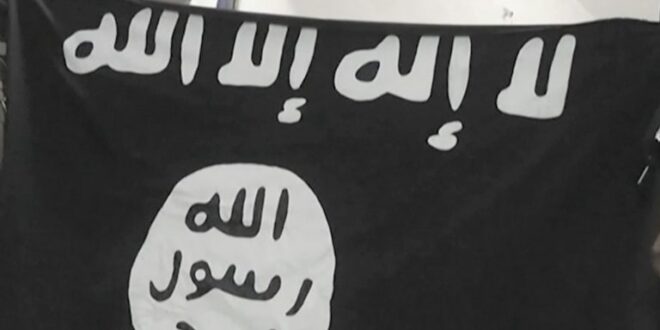ISIS is slowly regrouping in both Iraq and Syria, forming sleeper cells to launch attacks, while maintaining an effective command-and-control to wage a low-level guerrilla insurgency and mobilize new support.
The Islamic State is able to conduct asymmetric attacks on civilians and security forces, but can also marshal the resources to launch spectacular attacks intended to destabilize the Iraqi government.
Between January 2020 and September 2021, ISIS claimed an average of 90 operations per month in Iraq, with a heavy concentration in Salah ad-Din, Kirkuk, and Diyala governorates.
In general, ISIS attacks in Iraq have been far more spread out throughout the country than in neighboring Syria, where attacks tend to be clustered near the eastern side of the Euphrates River Valley.
While Islamic State Khorasan (IS-K) in Afghanistan dominates the headlines of many of the world’s leading newspapers, but there are few articles or analyses dedicated to the core organization in Iraq and Syria. Even as Islamic State’s territorial caliphate was defeated in the spring of 2019, the organization itself is far from finished. Indeed, ISIS is slowly regrouping in both Iraq and Syria, forming sleeper cells to launch attacks, and has maintained effective command-and-control to wage a low-level guerrilla insurgency. The group’s current leader, Abu Ibrahim al-Hashimi al-Qurashi, architect of the Yezidi genocide, has maintained an extremely low profile, focusing on operational security over media and propaganda. Assassinations, ambushes, and bombings are common tactics used by the group. In late October, eleven people were killed and others wounded following an ISIS attack on a village in Diyala province, where civilians were targeted in al-Hawasha, near the town of Muqdadiya. The attack was reportedly launched because villagers were either unable or unwilling to pay the ransom for two villagers who had been kidnapped by ISIS.
According to a United Nations report published earlier this year, approximately 10,000 ISIS fighters remain active across Iraq and Syria. In September, ISIS claimed responsibility for an attack on Iraqi police and security officials in the al-Rashad region south of Kirkuk, resulting in the death of a dozen police officers. The same week, three Iraqi soldiers were killed in Mosul following an ISIS attack on an army checkpoint. Islamic State maintains the capabilities to conduct spectacular attacks in Iraq, as evidenced by the massive bombing of the popular al-Woheilat Market in the Baghdad suburb of Sadr City in July, which killed 30 and wounded dozens. Back in January, twin suicide bombings killed 32 people, and also targeted a busy market in Iraq’s capital. Operations conducted by the Shia-led Popular Mobilization Forces (PMU) have led to ongoing sectarian tensions, and will serve as a recruiting tool for ISIS to replenish its ranks with disenchanted Sunni Arabs.
Abu Ibrahim al-Hashimi al-Qurashi has maintained an extremely low profile, focusing on operational security over media and propaganda. But just over two years after the killing of the group’s longtime leader, Abu Bakr al-Baghdadi, Islamic State remains a potent threat to communities in Syria and Iraq, and internationally. According to data analysis by EXTRAC, a conflict analytics system that combines attack and communications date with artificial intelligence (AI), between January 2020 and September 2021, ISIS claimed an average of 90 operations per month in Iraq, with a heavy concentration in Salah ad-Din, Kirkuk, and Diyala governorates. ISIS has gone through similar periods where it appears to be laying low and husbanding resources, only to reemerge after spending time planning for renewed assaults against Iraqi security forces and government targets. If the United States withdraws its remaining troops, believed to be somewhere around 2,500 in total, there is a major risk that ISIS will take advantage and seek to go on the offensive.
In general, ISIS attacks in Iraq have been far more spread out throughout the country than in neighboring Syria, where attacks tend to be clustered near the eastern side of the Euphrates River Valley. In early October, Iraqi authorities announced that they had captured and arrested Sami Jassem al-Ajuz, Islamic State’s finance chief, in “a major action by our forces in the National Intelligence Service and a special operation outside our borders,” according to a statement from the Iraqi security forces. Although no more information was provided, the New York Times suggested in an article, quoting a senior Iraqi intelligence official who asked not to be identified, that the operation took place across the border in Syria. With tens of millions of dollars still in its war chest, and potentially more, the Islamic State’s core organization in the Levant can still function as the central nervous system of a worldwide constellation of terrorist affiliates and franchise groups. Reports suggest that ISIS is active in the displacement camps in northeast Syria, radicalizing and intimidating inhabitants and extorting support from nearby communities. A significant amount of its bandwidth has been dedicated to promoting its branches throughout sub-Saharan Africa and now, following the Taliban’s takeover of Afghanistan, in various parts of South Asia.
 Eurasia Press & News
Eurasia Press & News




